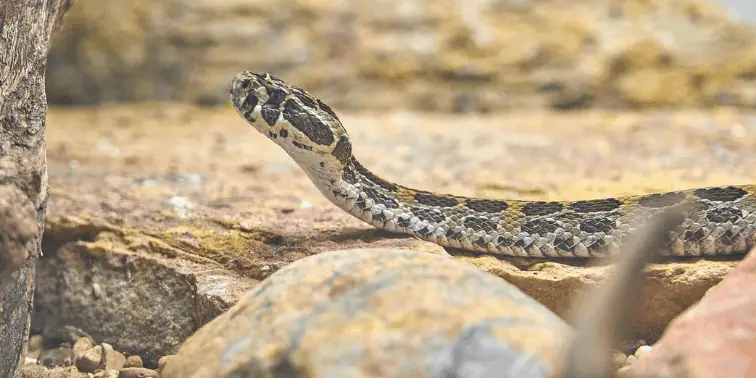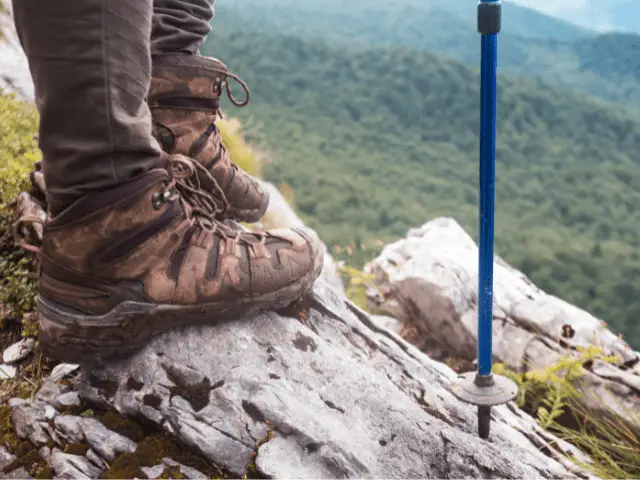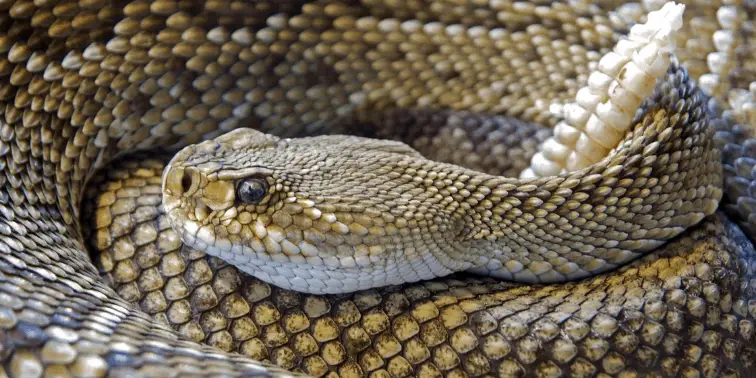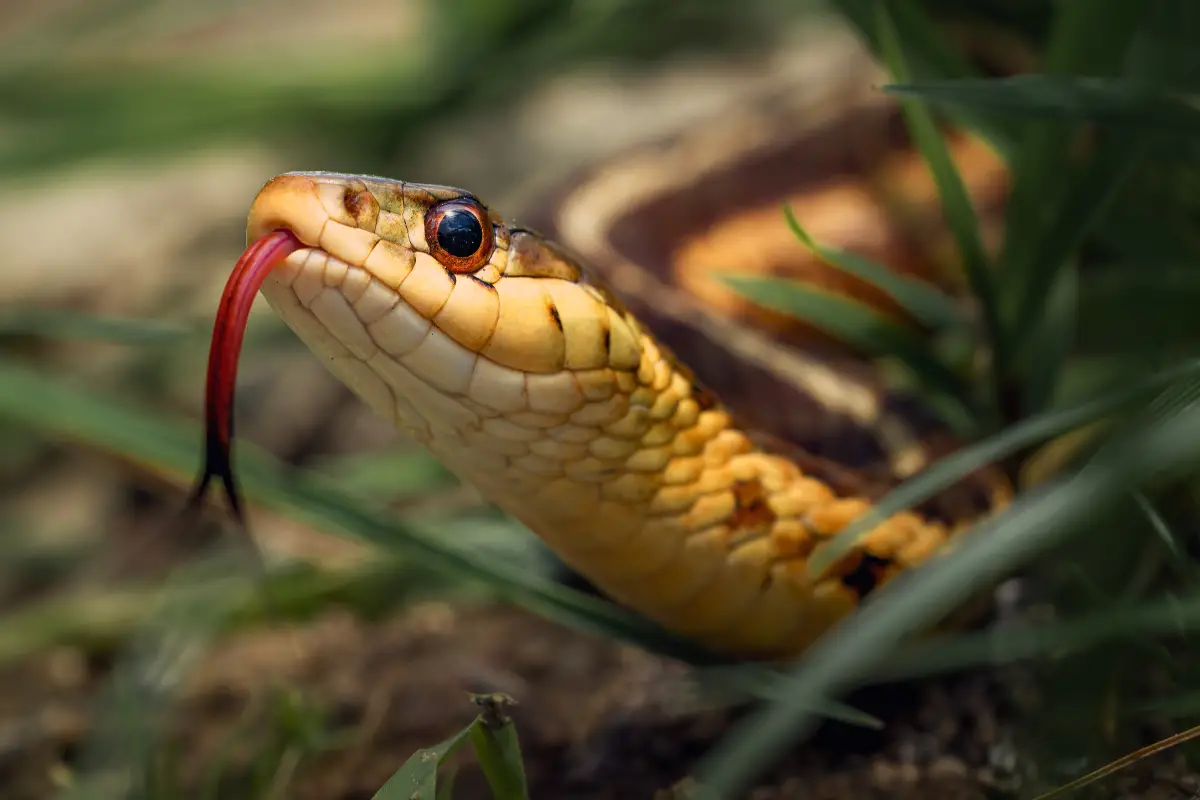Growing up in snake country, you tend to come across a snake or two while out on the trail. After all, we are in their territory. And I get it, running into a snake on the trail can be a really scary experience. The best thing to do before hitting the trail is to get to know all about snakes so that you can learn to avoid them altogether.
To ensure that you do not run into a snake while hiking, avoid hiking during the spring and summer months when they are most active. If you do need to hike during these months, hike in the morning or evening hours when snakes are least active to minimize any encounters.
I’ve run into dozens of snakes over my lifetime and captured and relocated dozens more. I remember the first snake I came across was a really frightening experience for me. I learned that in order to be comfortable in Nature, you must learn all of its hazards first.
So I set out to learn all that I can about snakes so that I would no longer fear them. After years of experience hiking and encountering snakes, I am finally getting to share what I’ve learned about how to deal with snakes while on a hike.
This page contains affiliate links. If you use these links to buy something I may earn a commission. Thanks.
How To Avoid Encounters With Snakes While Hiking
The best way to deal with a snake while on a hike is to completely avoid them in the first place. To do this, you must learn about snakes; how they act, what their patterns are, where they like to hang out, etc. If you can do this, you can drastically reduce the chance of coming across one while on the trail.
What Is The Best Time Of Day To Avoid Snakes

Snakes are cold-blooded creatures. Every morning as the sun hits their hiding spot, snakes emerge to warm their bodies with the sun. Without the chance to bask in the sun’s warmth, they would otherwise remain immobile in their hiding spot.
After warming themselves up, the snake’s cardiovascular system is pumping and ready to go. The snake’s most active time of day is between the hours of 10-3 pm, although they tend to seek shelter from the sun during the middle part of the hottest days.
So it’s simple if you want to avoid snakes, go for a hike when they are least active, either in the middle of the day when the sun is beating down or in the morning or evening hours when shadows are long.
I find these to be the best time to hike regardless, the lighting is better, the air is cooler and the chance of seeing another type of animal on the trail is higher.
Hike During Their Off-Season
Like we already mentioned, snakes are cold blooded animals, meaning they need the warmth of the sun to be able to kickstart their metabolism so they can begin their day. Because of this, they are most active in the Spring and Summer months.
You can still find a few snakes in the fall, but by winter they are all but non-existent, hiding in their holes for the warmer months of spring.
If you want to ensure that you will never come across a snake on a hike, this is when you want to be hiking, the fall and winter months. Unless you are turning over rocks or putting your hands down holes, you will most likely never encounter a snake during this time.
Keep Your Eyes Scanning The Trail
If you can’t find a way to avoid the times that snakes are most active, then you need to boost your awareness level while out on the trail. Be sure to scan the trail as you are hiking along, (from side to side, ahead of you).
I have found snakes to prefer laying out in the open, right in the middle of a trail or near some rocks because these tend to be the warmest places. As the day heats up they move around a bit more, trying to stay out of site or keep cool from the hot midday sun.
When you sit down for a lunch break on a boulder, be sure to check the surroundings for possible snake hangouts, holes, cracks, etc. Be careful when walking through a pile of leaves because that is also a popular spot for snakes to hide.
I have walked right over rattlesnakes resting on the trail because they looked like nothing more than a stick on the ground and I had my head in the clouds. I got lucky that day, a couple of inches more or less and I could’ve stepped directly on a rattler.
Keep your eyes open!
Wear Appropriate Gear
This is where having the right gear can literally save your life. Walking in sandals on a trail with a possible snake encounter is not a wise idea. Instead, a good, sturdy pair of hiking boots with a high top can protect you from most snake bites.
You can take it further and purchase a pair of snake gaiters which are like chaps for your legs that protect you from possible snake bites.
And as always, hiking with a good first aid kit, perhaps one with a snake bite kit as well.
Hike With Trekking Poles

Trekking Poles can be a great aid in snake country. You can push away shrubbery or tap on rocks as a warning to snakes that you are coming.
As a last resort, trekking poles can be used to wrangle a snake to move it out of harms way. This method is not recommended, but possible in an emergency situation.
What To Do If You Encounter A Snake
No matter how careful you are, if you are hiking in snake country it is very likely that you will run into one. So what do you do? First thing, DO NOT PANIC! Snakes are more afraid of you than you are of it. I mean look at you! You are huge compared to a snake.
After all, it is rare in North America for anyone to die from a snake bite. Out of 8000 or so people who do get bit by a snake every year, only 5 die. You’ll probably be fine.
What Kind Of Snake Is it?

Now that you are face to face with a snake, perhaps you can quickly I.D. it. Does it have a broad, diamond shaped head or does its head flow into the rest of it’s body? A snake with a diamond shaped head is usually poisonous while the opposite is true for snakes with slimline heads.
That’s not to say you should treat them any differently, but identifying snakes can help you put your mind at ease. Especially if you take the time ahead of time to study up on common snakes in your area. Youtube can be a good guide as well as a copy of Peterson’s Field Guide to Snakes.
Walk Away…Slowly
Regardless of what type of snake it is, first you want to freeze, identify where exactly the snake is and slowly walk away, giving it a wide berth. If that means you have to walk off trail to do it then so be it.
Do not try to handle the snake unless in case of imminent danger. It is always safest to just walk away.
The energy an animal needs to exert to attack is immense. The last thing it wants to do is expend that energy. Remember, as it sits there coiled menacingly in your direction, all it wants to do is scare you away. It will only attack as a last resort.
What To Do If You Do Get Bit By A Snake While Hiking
Worst case scenario, you are bitten by a snake. Now what? This is exactly what you need to be ready for if you hike anywhere near snakes. If we prepare ourselves, we can calmly respond. First thing, DO NOT TRY AND SUCK THE POISON OUT!
Stay Calm
Do not freak out when you get bit, this will only scare the snake more. Instead, stay calm and slowly walk away from the snake.
Freaking out might even lead to other issues such as tripping over rocks or logs and injuring yourself further.
Contact Emergency Personnel
Try your best to call 911 as soon as possible. If your phone does not work, have a friend or find another hiker to get help for you. It is important that you rest and slow your heart rate, this will limit the spread of the venom.
Remove Tight Clothing
As the snake bite begins to take hold, you will begin to start swelling. Take off all tight items that may be on your body now, such as rings, watches, tight clothes. Try to lightly bandage the snake bite, but not too tightly, we do not want to apply a tourniquet.
Leave The Snake Bite Alone
You can wash the wound area with soap and water or an antiseptic, but do not try and do more. Ibuprofen or aspirin can only make matters worse by thinning the blood and spreading the venom. Just clean the wound and leave it alone.
Best thing to do is to lay in a position where the wound is lower than your heart, relax and wait for medical professionals to arrive.
With this information, you are now equipped to hit the trail and be ready for whatever gets thrown at you. The world is now yours! Explore it.


